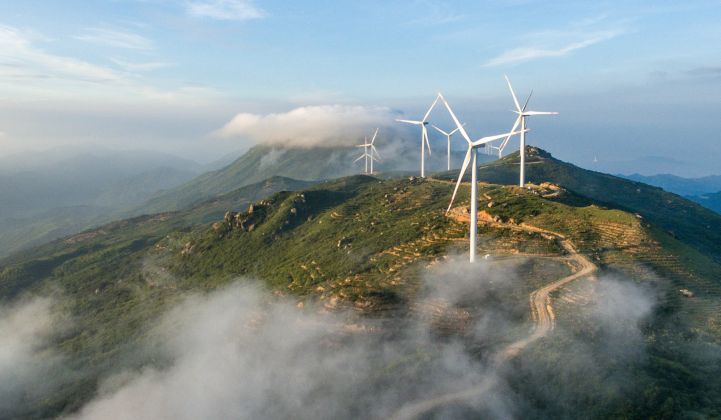The amount of wind power available to onshore turbines appears to have dropped across the Northern Hemisphere, Chinese research unveiled this month.
A team from the Beijing-based Chinese Academy of Sciences, along with a researcher from Purdue University in the U.S., analyzed data from more than 1,000 weather stations worldwide and found 67 percent had experienced a significant decrease in wind power potential since 1979.
The effect was strongest in Asia, where the team estimated about 80 percent of locations had seen a 30 percent drop or more in available hub-height wind power.
In Europe, roughly half of all locations had seen a similar drop, while in North America around 30 percent of sites had seen a 30 percent fall in wind.
“The results show that surface wind speeds were decreasing in the past four decades over most regions in the Northern Hemisphere,” said the team in a paper published in Energy in November and announced by the Chinese Academy of Sciences this month.
In China, which has the world’s largest installed wind energy capacity, the regions with the strongest decrease tended to be those with the most abundant resources and “where a number of gigantic commercial wind farms were built,” said the paper.
Corresponding author Dr. Gang Huang told GTM the team is now conducting a follow-up study to investigate possible reasons for the drop.
Factors such as land use and surface cover changes could be to blame, he said. The expansion of cities could be affecting wind speeds in developing countries such as China and India. “Those are all assumptions, though,” he said.
In a Chinese Academy of Sciences press release, lead author Qun Tian said the study compared observed long-term changes in wind energy against those predicted by global climate models.
“The climate models have a notable deficiency in simulating wind energy,” Tian said.
Nevertheless, a simulation-based study published in Nature Geoscience a year ago did predict that increases in carbon dioxide emissions would lead to decreases in wind power across the Northern Hemisphere mid-latitudes.
The study, led by Kristopher Karnauskas of the Department of Atmospheric and Oceanic Sciences at the University of Colorado in Boulder, predicted there would also be increases across the tropics and Southern Hemisphere, with substantial regional variations.
The Global Wind Energy Council and the European wind industry body WindEurope both declined to comment on the Chinese study.
But Geoffrey Taunton-Collins, senior analyst at specialist renewable energy insurance provider GCube, said: “It should be of particular concern to operational wind farms whose financials are based on resource estimates which don’t factor in lower future wind speeds.”
At the same time, though, he said, “project owners would do well to be cautious about the headlines generated by studies of this kind.”
Other studies have led to similar findings based on weak methodology, Taunton-Collins claimed. For example, he said, some researchers have used wind speeds measured at 10 meters from ground level and then scaled that up to 100 meters by a constant factor.
“If 10-meter wind speeds were representative for 100-meter hub heights, it wouldn’t be necessary to have met masts to produce resource assessment reports,” he said.
Furthermore, he said, some studies might oversimplify the potential impact of long-term weather trends on wind production.
“Decreases in the average wind speed combined with increases in wind volatility can actually increase overall energy production due to the shape of wind turbine power curves,” he said.
Shashi Barla, senior analyst at Wood Mackenzie Power & Renewables, said: “We need to take these kinds of studies with a pinch of salt, with all due respect to them. Maybe it’s true, but would it have an impact on the industry? I don’t know.”
Any decreases in wind resource might be canceled out by improvements to turbine technology, he said. Even if wind speeds are dropping, turbine makers are working harder to make better use of the available energy.
That doesn’t mean an ongoing drop in wind potential is something the industry should ignore, though. “What influences energy production? Number one is the wind speed,” Barla said.




